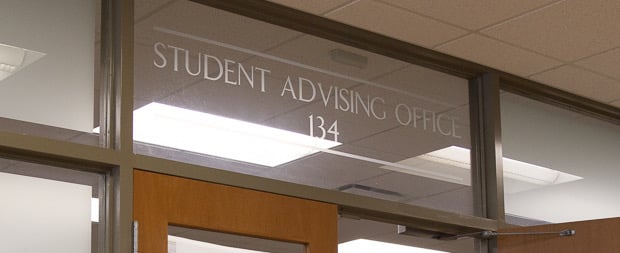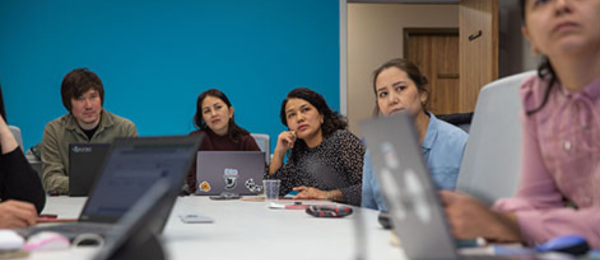< About
< Academics
< Certifications
< Research
< Outreach
< News & Events
Chapter 2: Value
Learning science can be a valued activity in many different ways. Where one student may perceive it as a useful tool in the pursuit of a personal goal, another may experience it as an enjoyable activity that satisfies personal curiosity. No matter how it is valued, students who value science tend to be more motivated to learn, and to become more engaged with the subject matter in both the short and long term. Chapter 2 offers insight into how both male and female students might find value in science, and suggests ways in which you as teachers can foster this value in an engaging manner.
Resources to support teachers in promoting student valuing of science can be found by clicking on the links shown at right. Resources include handouts and activities, further reading, links to recommended websites, and short (~ 3 minute) video clips illustrating the importance of this concept to practicing scientists and showing exemplary high school teachers who practice the strategies recommended in the book.
1. Interest Surveys
Student Interest Inventory with items to use for a customized interest survey.
Parent Interest Inventory, surveys for parents/guardians – “what should I know about your child?”
2. Promoting Relevance and Utility Value
Science360 Videos are a compilation of clips made by scientists, laboratories and their agencies to exemplify current science stories and discoveries. Sponsored by the National Science Foundation, these compelling videos spark interest and demonstrate the relevance of science. The topics tab allows teachers to search by subject area (e.g. physics, earth science) and the series tab lists and provides links to series like the science of various sports and other student interests.
Spark 101 provides video clips that expose students to scientists using scientific knowledge to solve problems.
NSTA blog entry about making science relevant.
Article on making science relevant: Eick, C., Deutsch, B., Fuller, J., & Scott, F. (2008). Making science relevant. The Science Teacher, 75(4).
Online materials at Ted.com connecting your content to relevance: search by tags for science you teach.
Online chemistry community – ACS Network – follow the “high school” link on the left for examples of connecting science lessons with real life.
Biology-related articles with practical connections to real life from American Biology Teacher.
Online mini-magazine that connects physics experiments with real world occurrences of the same phenomena.
American Physical Society’s website has many interactive and practical resources to use in the classroom.
A Weekly Review Activity that helps students reflect on and connect classroom activities to their lives.
3. Problem Based Learning (PBL) Resources
A guide to problem-based learning in science classrooms.
An issue of Science Class, high school edition that features PBL.
Problem-Based Learning Matters – a guide to PBL by Illinois Math and Science Academy.
Introduction to PBL with lesson plans.
Articles in biology that could be PBL topics.
4. Storytelling
Science as storytelling: An activity to promote students’ conceptions of the nature of science
Article on science as story telling: Bickmore, B.R., & Grandy, D.A. (2005). Science as storytelling
Books that may be used as tools for story telling:
- Remarkable Creatures by S.B. Carroll
- Into the Jungle by S.B. Carroll
- Cod: A biography of the fish that changed the world by Mark Kurlansky
- Salt by Mark Kurlansky
- Longitude by Dava Sobel
5. Parent Involvement – Science Careers
Interviews with real scientists.
Information on how to get into the field of science.
Information on biology careers.
Information on health careers.
Moms Night Out for STEM: A webinar to help parents engage their children in science.
6. Guide for Finding Scientists
Here are some ideas for places to find scientists who might speak or otherwise communicate with your class:
Contact places that employ scientists:
- Colleges or universities in the area (call science departments directly; many have speaker’s bureaus)
- University extension offices
- Medical clinics and hospitals
- Pharmacies
- Government agencies: water and sewer districts, forest preserves, safety investigators, forensic scientists
- Nature Centers
- Museums
- Industries: food, energy, agriculture, computing,
Contact professional organizations for scientists to find members in your area.
Call American Chemical Society to find a chemistry ambassador in your area
Search the COPUS members by your state to find organizations interested in educating the public about the relevance of science
Adopt a Physicist Program – physics classes can participate in a discussion with a physicist for three weeks
Biology speaker data base with zip code search
7. General Resources
Pathways to Science: Practical resources for science education.
A Facebook science community.
Further Reading: A report on the Relevance of Science Education: Schreiner, C., & Sjoberg, S. (2004). Sowing the seeds of ROSE. Oslo, Norway: Unipub.
8. Videos About Value
Links to videos about concepts and strategies described in this chapter are found on this page. To learn more about the scientists and teachers featured in these videos, click here where you can read a description and/or select a link to find all video clips of them.
Scientists
- Regina talks about the importance of parents and teachers taking children’s curiosity seriously in order to develop scientific mindsets and interest from a young age.
- Regina discusses how specific content in her physics class captivated her interest and how her teacher’s faith in her made her confident enough to pursue science as a career.
- Dionne talks about how real world connections in science class boosted her interest in science.
- Laura talks about how her science teacher inspired her by making connections to his students and showing great enthusiasm for science.
- Laura shares how a friend’s mother who is a scientist influenced her interest in science and inspired her to become a scientist herself.
Teachers and Classrooms
- Students talk about how storytelling increases interest, enjoyment, and value in Kris’s class.
- A student talks about how novelty, story-telling, and her teacher’s passion for science create interest.
- Students talk about hands-on learning in the Mighty Acorns program, and the benefits thereof.
- Students experience the intrinsic value of learning and deepen their learning for the purpose of teaching the younger children.
- Ray talks about the importance of capturing students’ interest early on and making them think, which is reflected in his students’ descriptions of chemistry as interesting and fun.
- Matt promotes relevance in his classroom by applying concepts from science class to everyday situations which students experience or see in the news.
- Matt uses common snack products to teach students about how different types of fuel generate different amounts of energy.
- Matt promotes situational interest through demonstrations that are novel and dramatic.
- Steve’s students write letters to 5th graders about mindset and how the brain works, which increases their sense of value in learning the material themselves.
- Greg engages his students in doing “real” science by studying the prairie outside and vermaculture inside.
- Students turn garbage into rich fertilizer to grow plants and produce food in Greg’s classroom using vermaculture.
- Kelda’s students and their parents talk about how she motivates and promotes interest in geology through her passion for the topic.
- Meg and her students provide reasons for why PBL (problem based learning) is a valuable approach to learning science.
- PBL is a process that enfolds over time in Meg’s classroom.
- ?Meg exemplifies the teacher’s role in PBL.
- Students work in cooperative groups during PBL.
- ?Meg supports student autonomy during PBL.




